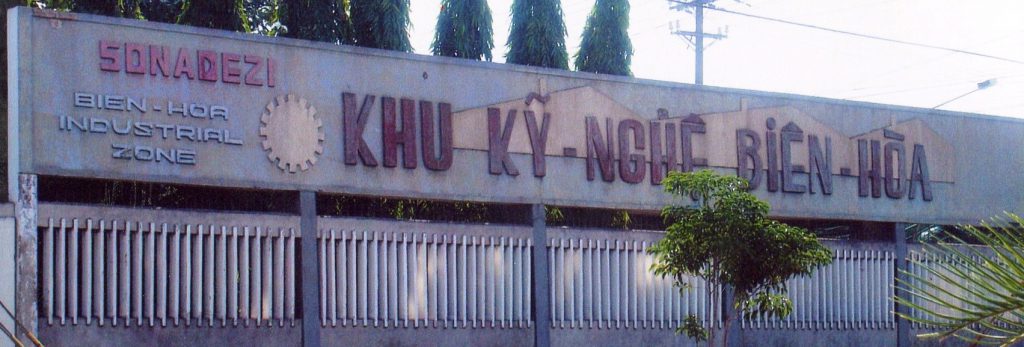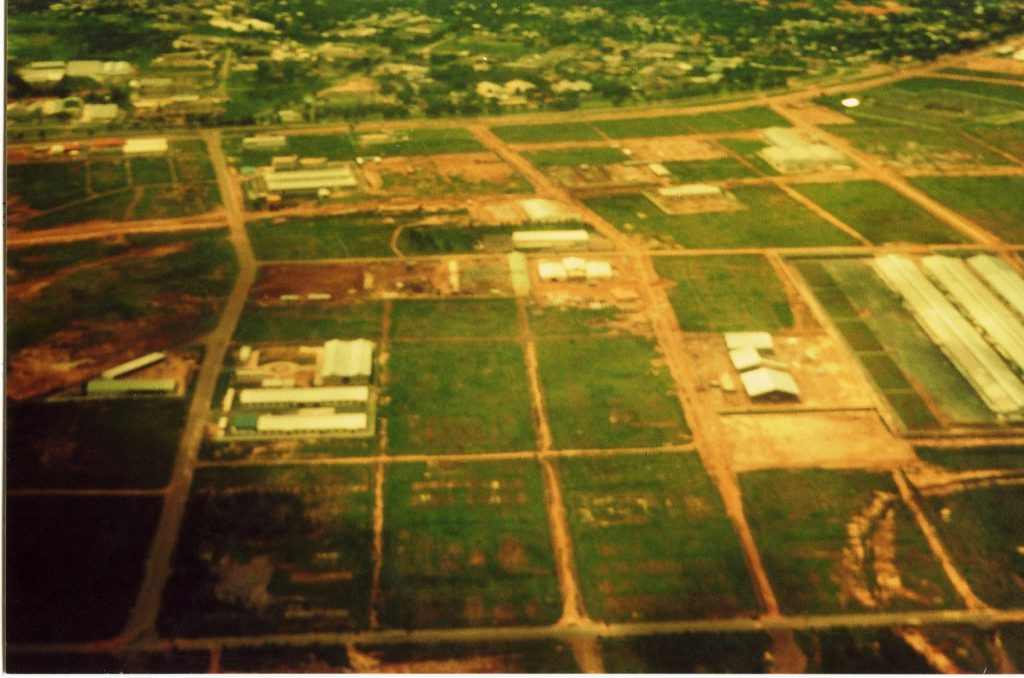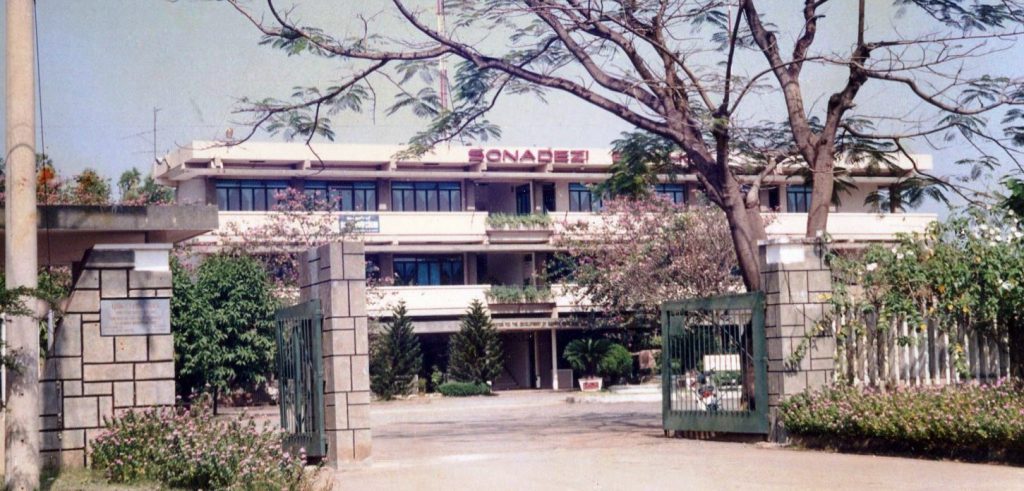On December 26, 1963, the Société Nationale Pour Le Développement des Zones Industrielles (Sonadezi for short) was established. The company has created and developed many industrial parks (IPs) across the country.
According to its records, Sonadezi’s initial capital was VND 40 million (contributed by Saigon Trade and Industrial Development Center). Annually, Sonadezi was funded by the national budget to develop its technical infrastructure. As of April 30, 1975, the total amount of state budget invested in Sonadezi was VND 500 million.
Sonadezi’s past successes
During its 12 years of existence (from 1963 to 1975), Sonadezi established Bien Hoa Industrial Park (March 25, 1963), Tay Do Industrial Park (January 6, 1968), Da Nang Industrial Park (November 3, 1971), Tan Mai Industrial Park (April 15, 1974), Long Binh Industrial Park (May 21, 1974), Cam Ranh Industrial Park (May 21, 1974) covering a total area of 511 ha.
During its 12 years of existence (from 1963 to 1975), Sonadezi established Bien Hoa Industrial Park (March 25, 1963), Tay Do Industrial Park (January 6, 1968), Da Nang Industrial Park (November 3, 1971), Tan Mai Industrial Park (April 15, 1974), Long Binh Industrial Park (May 21, 1974), Cam Ranh Industrial Park (May 21, 1974) covering a total area of 511 ha.

For these, Bien Hoa industrial park (now Bien Hoa 1 Industrial Park) is a project of historical significance to Sonadezi’s formation and development.
Bien Hoa Industrial Park was located in Duc Tu district, (former) Bien Hoa province. This was a large industrial park, with an important position in the national economy. By the end of April 1975, Bien Hoa IP’s occupancy rate was 86% with 95 enterprises.
This included 62 active enterprises, plus 26 developing their factories and another 7 having their factories under renovation. The enterprises were in different 14 industries, including architectural construction, electricity – electronics, metallurgy, textiles, glass, plywood, plastics and rubber, food, chemicals, printing paper, paint, mechanical engineering, ancillary facilities and others.
The achievements of Bien Hoa Industrial Park provide a vivid example of the success of the industrial park model in Vietnam during the 1960s and first half of the 1970s.
Dissolution of Sonadezi and issues in management of Bien Hoa IP
In April 1975, the Ministry of Construction took over Sonadezi. After several organizational changes, Sonadezi was dissolved. The issue of management and operation of industrial parks, under the guidance of the Central Government, was discussed in multiple opportunities between Dong Nai province and central agencies, but no structure was eventually established for consistent state management of these industrial parks, including its infrastructure.

The factories and enterprises in Bien Hoa EZ were then managed by 7 ministries/central agencies and the People’s Committee of Dong Nai province. There was no ownership over land outside each factory fence and within the IP. There was also a lack of public services while technical infrastructure, including internal roads, water supply and drainage, power supply and telecommunications system, was deteriorated as generated revenue was not enough to cover maintenance and repair.
The state management of Bien Hoa IP also faced many difficulties as local residents illegally encroached on about 150 ha of the IP for housing construction. Security in the IP was low and environmental pollution was getting worse.
These were all triggered by a lack of management regulations and a body that could deliver on Sonadezi’s roles as before. On top of this were bureaucratic practices and failure of competent agencies to deal with the issues in the IP management.
Meanwhile, in the subsidy economy period, factories and enterprises in the IP could not include their infrastructure expenses into the product costs. Their budget for maintenance and repair of above-mentioned infrastructure thus run low, leading to the serious deterioration of infrastructure at the IP.
Sonadezi brand “reborn”
In the face of such difficulties in the management and operation of Bien Hoa IP, the People’s Committee of Dong Nai province discussed and mobilized funding from enterprises based in Bien Hoa IP to repair part of the infrastructure. Also, for its management and to leverage emerging opportunities and available capital and technical resources for transformation of Bien Hoa IP in the economic renovation period, the Provincial People’s Committee decided to establish Dong Nai Industrial Development and Investment Company. The company was tasked to manage and lease the IP infrastructure, acting as a focal point for development investment services and bridging enterprises then based in the IP with other local and international economic organizations.
However, under the then management model, two thirds of factories and enterprises were under the direct management and supervision of ministries and central agencies. In order for Dong Nai Industrial Development and Investment Company to operate effectively in line with its functions and tasks, it was necessary to obtain consent and support of ministries and central agencies in charge, plus approval by the Chairman of the Council of Ministers. Therefore, on December 16, 1989, the People’s Committee of Dong Nai province issued a report No. 990/TT.UBT, requesting the Council of Ministers to allow it to manage and invest in the development of Bien Hoa IP.
To solve the problems of the IP, the Council of Ministers assigned the Ministry of Construction and the People’s Committee of Dong Nai Province to review and draft 4 documents: Regulations on Management of Bien Hoa Industrial Park, Bien Hoa Industrial Park Master Plan, Economic and Technical Justification for Bien Hoa Industrial Park Development Company, and Charter of Bien Hoa Industrial Park Development Company to be submitted to the Council of Ministers for approval.

The Economic and Technical Justification for Bien Hoa Industrial Park Development Company was developed on the basis of the following principles: Separation of state management from management of technical infrastructure of the industrial park; trading in technical infrastructure to generate adequate revenue for maintenance costs. Specifically:
– Dong Nai Provincial People’s Committee performed state management of the industrial park.
– The State invested in and offered concessional loans, even zero-interest loans, to Bien Hoa Industrial Park Development Company to restore and develop technical infrastructure. When there was revenue from business activities, the Company would cover all of its own expenses for maintenance and repair of technical infrastructure.
– In order to support and encourage efforts of the Company, the State was suggested to offer tax exemption for its trading in technical infrastructure and public utility works of the Industrial Park. As for other business activities, the Company shall fully fulfill its tax obligations to the state.
After numerous efforts, Bien Hoa Industrial Park Development Company (originally Dong Nai Industrial Development and Investment Company) was established by the People’s Committee of Dong Nai province under Decision 1713/QD-UBT dated December 12, 1990. The company decided to use Sonadezi again as its transaction name, marking its return to the market and continuing its journey in developing industrial park infrastructure, starting with maintenance and repair of Bien Hoa 1 Industrial Park.
